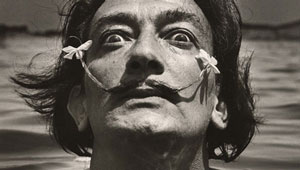Let’s talk clichés: There are two main schools of photography. On the one hand, slightly exaggerated, we have the romantics, the old school. The only post-processing happens in the darkroom. No in-camera settings, because there were none. Few options to tweak a shot. An image is what an image is. In a nutshell, it’s the Group f/64‘s approach. Photography without departure from the simplest aspects of straight photographic procedure.
Then there’s the world of digital photography. Shooting the image itself is the smallest part of the work. The image is already heavily adjusted in-camera and is then at the mercy of an abundance of post-processing softwares of one’s choosing.
Neither film nor digital are a “better” photography. But it’s safe to say that the process of photography itself is less and less important while post-processing becomes more and more critical.
Meaning, instead of breaking the bank to finance the latest, stellar gear it can make more sense to take a few lessons in imaging post-processing. You’ll be able to extract information from those files and alter images in a way no camera alone is ever able to do.
In other words, take a photographer with a lousy cam and great post-processing skills, and then a photographer with expensive gear and an aversion to Photoshop & Co.

The photographer relying on his gear requires a completely different set of skills than the photographer trusting his post-processing skills. The classic photographer must understand composition, rule of thirds kind of stuff, the relationship of aperture and shutter speed and what the numbers mean, you have to be able to understand and use A/S/M modes, bracketing, lighting and its effect on images. You furthermore understand noise, ISO, digital artifacts, dynamic range and general behaviorial characteristics of digital imagery.
As a friend of post-processoring, you’re into color space, resolution, interpolation and resizing. You understand the histogram, curves, layers and are able to use unsharp mask, etc.
Want to print? That requires yet another set of skills, just to mention monitor and printer calibration and an understanding of ICM profiles, DPI, PPI and native print resolution, as well as of interpolation (Lanzcos, bicubic, etc.), printing technology behaviors and shortcomings. And don’t forget the many photo papers…
The “ideal” photographer understanding what he or she is doing is a photographer with a combination of all the skills.
Don’t just rely on modern technology. The digital photographer, armed with memory cards that can store thousands of high resolution shots, doesn’t much care about concept and composition. Hundreds of shots a day is the norm… unthinkable for the film photographer. He works much more careful. Because there are only so many shots on a roll of film.
This is why a strict digital imaging process makes sense. In the end a proper process not only improves the quality of one’s portfolio, it also helps save time by knowing what you’re doing.
Or you’re the spontaneous kind of photographer, rather shooting on instinct?
Try this:
My digital imaging process starts with the concept, the thought. The first step. Does this make an interesting image?
The second step — and it may sound like old school again — is pre-shooting. Is there a clear message?
Decisions have to be made about how to frame the shot. The technical aspects of the shot are considered. What lens, what angle. Where should I focus. What kind of light do I have. Moving or static subject/object? Facing lighting problems? How should I meter the image. Can all of this dynamic range fit into one image? Should I bracket this exposure? Handheld or do I need a tripod or some other kind of support?
The next, third step is taking the shot(s).
The fourth step is — for many photographers — the most important one: post-processing.
BTW, most of my post-processing I do via Adobe Bridge’s “Open in Camera RAW…” Wonderful feature.
You crop, reframe, adjust levels and/or curves. That covers exposure, contrast, saturation and color balance issues.
Look closely whether items need to be cloned, removed or painted over, etc. Noise removal?
Sharpen either selective parts or the whole image. Then save a full resolution version and a compressed, resized one.
When saving, change the files’ names. Or your originals are gone.
Sit back and evaluate.
Do you like it? Feel like hitting the delete button?
Does the image say or portray what you intended?
Does it pass the “Honey, what do you think of this one?” test?
Feel like uploading it to a critique site, and then you hit that reload button again and again to see how it is received?
Based on the critiques and your reaction, may there be a revision?
If you’re totally confident the image may or may not now be printed.
So this is the obvious, the digital image process.
To each his own.
Don’t you suddenly miss the good old simple film days?
But film, easier?
Mixing chemicals? Turning on the exhaust fan? Drying the film, mixing the chemicals for paper? Contact sheet? Enlarger?
Long live digital! Digital forever!
Even though, at some point an overly post-processed image ceases to be photography.


